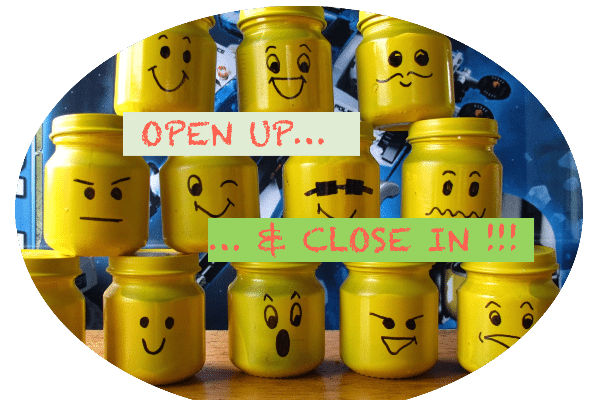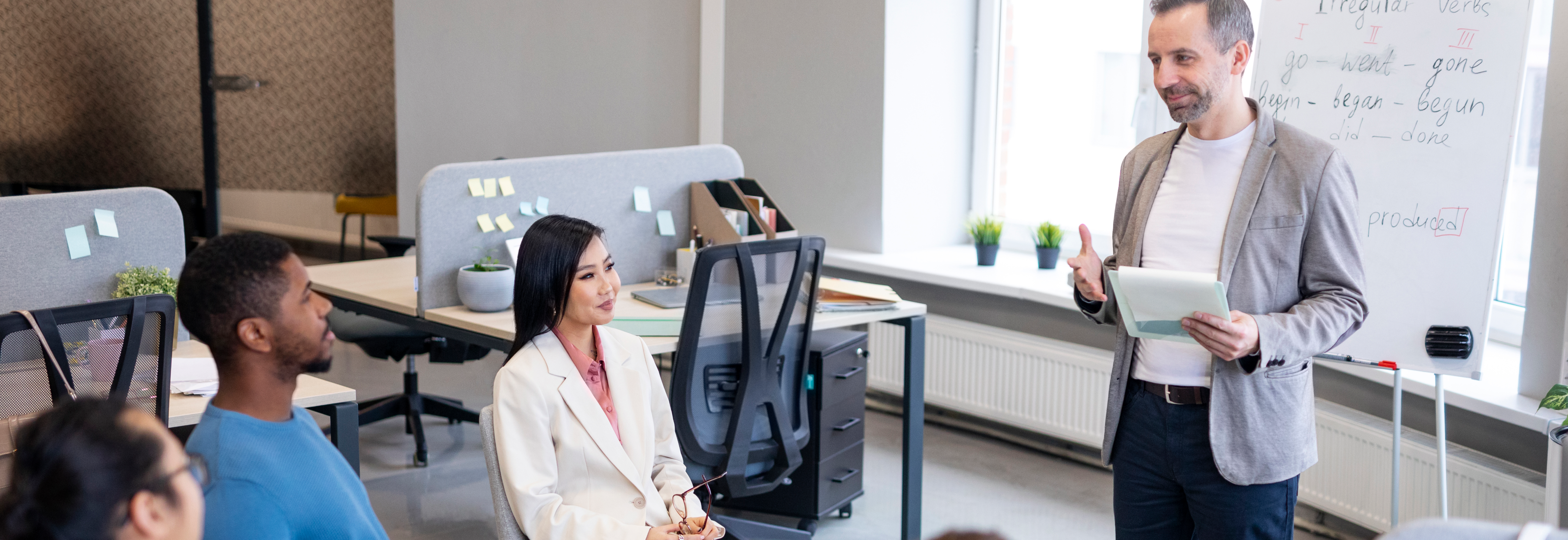In our experience at FocusU, one of the most transformative moments in any team-building journey happens not during the games or energizers, but in the quiet vulnerability of personal storytelling. It’s in these moments that individuals stop being just colleagues and start becoming something more: a team.
We saw this unfold vividly during a session for a cross-functional leadership team. The group had been working together for years. On the surface, they were familiar. They collaborated on projects, joined calls, and exchanged pleasantries in meetings. But beneath that familiarity was a lack of depth – and the business was beginning to feel the effects.
The leader, new to the team, approached us with a common challenge: How do you break down silos and build real cohesion?
Our solution didn’t involve a ropes course or high-octane challenge. It began with a simple question: Do you really know the people you work with?
Enter the Johari Window: The Psychology Behind Trust
Table of Contents
The Johari Window is a powerful tool that helps teams explore the known and unknown parts of themselves and their relationships. It has four quadrants:
- Open (known to self and others)
- Blind (unknown to self but known to others)
- Hidden (known to self but unknown to others)
- Unknown (unknown to all)
Our focus? The “hidden” quadrant. By creating a safe, structured space for people to share their stories, struggles, and defining moments, we help them bring what’s hidden into the open.
Why does this matter? Because trust is built not through tasks, but through truth.
A Real Session, A Real Shift
It was 10pm, well past the wrap-up time. But nobody moved. We were in the middle of a personal-disclosure session, and the energy in the room was electric with emotion.
Some eyes were misty. Others stared silently, absorbing the weight of the stories. As facilitators, we weren’t leading; we were witnessing. Stories of childhood struggles, lost parents, broken dreams, and moments of triumph were shared with a courage that can only come from feeling truly safe.
In our experience, this kind of honesty is what forms the bedrock of lasting team bonds.
Tools That Open the Door
Creating this level of openness isn’t accidental. It requires intention, structure, and trust. One of our favorite tools for this is the Personality Tree exercise:
Draw a tree. The roots are your core values. The trunk is your character. The leaves are your strengths. The thorns? Your challenges. The flowers? Your achievements. The buds? Your potential. Now, tell us the story of your tree.
It sounds simple. But in our sessions, we’ve seen even the most stoic leaders pause, reflect, and reveal layers of themselves they’ve never shared before.
What Happens When People Open Up?
Here’s what we’ve consistently seen in team-building journeys that include personal disclosure:
- Empathy increases: People stop judging and start understanding.
- Respect deepens: When you know someone’s story, you value their voice.
- Communication improves: Conversations become more open and honest.
- Trust accelerates: Teams become safe spaces for real dialogue.
One of our favorite moments is watching what happens during breaks post-session. Before opening up, people sit in cliques. Afterward? Tables are pulled together. Laughter flows. The “team” finally feels like one.
The Role of the Facilitator: Holding Space, Not the Mic
As facilitators, our job is subtle but critical. We listen. We observe. We intervene only when necessary. The power of these sessions lies in the silence we hold, not the wisdom we offer.
It’s about:
- Creating psychological safety
- Modelling vulnerability
- Knowing when to guide and when to step back
Facilitators must carry high emotional intelligence, self-awareness, and a deep respect for the trust participants place in the process. Because you can’t ask others to open up if you’re not open yourself.
Opening Up as a Leadership Competency
For L&D and HR professionals, the takeaway here is significant. If you want:
- Teams that collaborate deeply
- Leaders who inspire trust
- Cultures that foster inclusion
…you need to normalize vulnerability.
That doesn’t mean oversharing. It means:
- Encouraging leaders to share their leadership journey – not just their victories, but their stumbles
- Creating rituals in teams where people can share weekly wins, fails, and learnings
- Making space for conversations that go beyond the task list.
Related Reading: 10 Essential Leadership Qualities
Final Reflections
At FocusU, we often say: “You can’t build teams without first building trust. And you can’t build trust without opening up.”
Team building isn’t always about strategy decks and alignment sessions. Sometimes, it’s about sitting in a circle, listening without interruption, and saying, “I didn’t know that about you. Thank you for sharing.”
So the next time you’re planning a team offsite or engagement activity, ask yourself:
What if the greatest ROI doesn’t come from what they do together, but from what they reveal to each other?
Because in our experience, teams that open up, level up.










